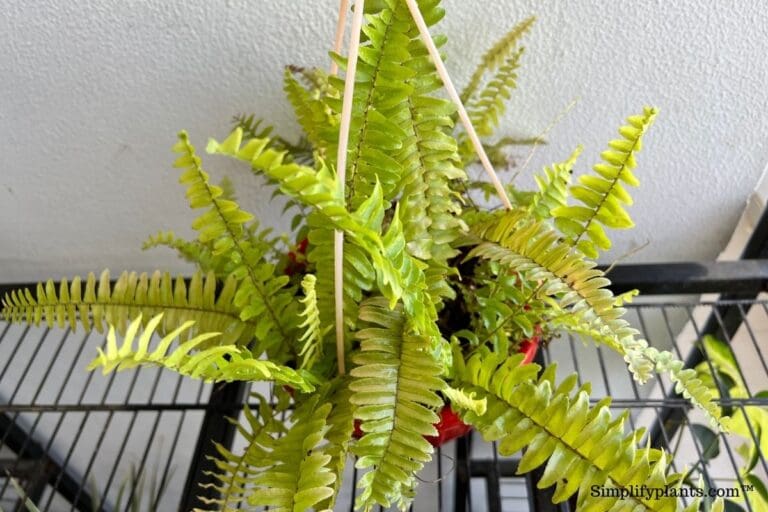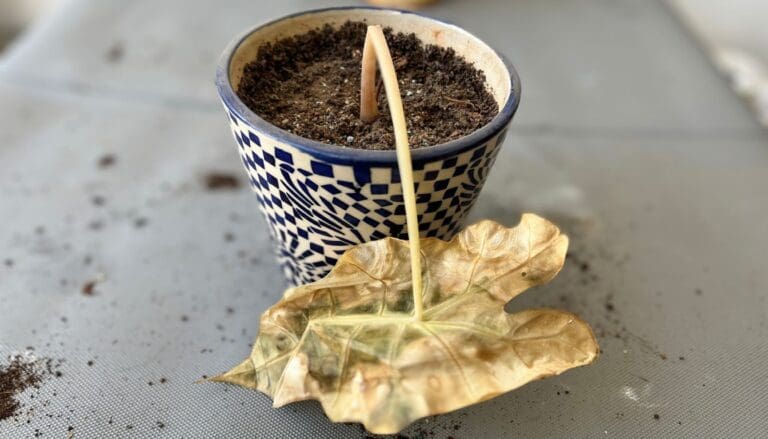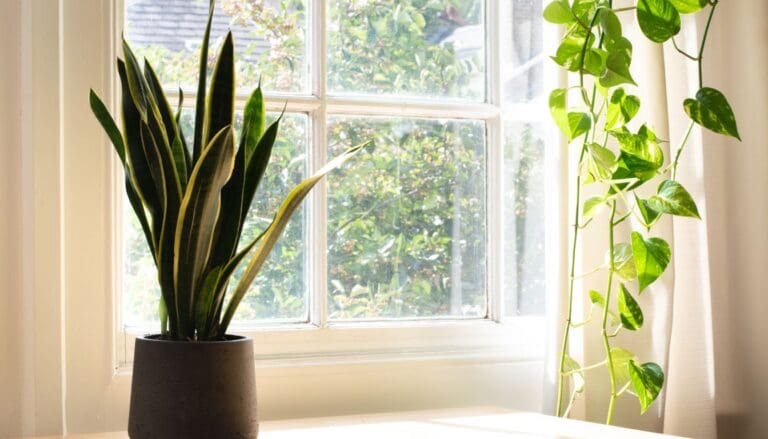7 Reasons Why Your Monstera Plant Have Brown Spots?
Monsteras are sturdy plants, but they do need proper care to thrive. If ignored, they might give you some unpleasant views. You may see brown spots, brown blotches, entire leaves turning brown. These are signals to some severe issues with your plant. But why does your monstera have brown spots? Let’s find out!
Excessive light exposure, pests, insects, bacteria, fungus, or inadequate watering schedules are major causes of brown spots in monstera. Even inadequate fertilization can lead to brown spots on the leaves of your monstera plant. Providing adequate watering, light, and fertilizer can help to resolve the issue quickly.
All we are doing here is to start with knowing the right cause to treat with corresponding solutions.
Without knowing the reason, you can never treat your plant. Thus, we will first determine the cause of the problem, and then we shall look for a possible solution at a later part of the article.

Please note: Simplify Plants is reader-supported. Some links in the post are affiliate links and I get a commission from purchases made through links in the post.
What causes brown spots on monstera?
There are various causes of brown spots on monstera. Some of these include:
- Excessive lighting
- Low humidity
- Fungal diseases
- Leaf diseases
- Pests
- Fertilization issues
- Inadequate watering
Let us discuss each of these issues in detail.
Excessive Lighting

Monstera though love light, sometimes growers expose them to too much intense light for long hours. That is one of the influential causes of brown spots on monstera leaves.
Monstera plants, if exposed or kept near excess heat sources, direct sunlight, heaters, and vent’s turn their leaves brown or develop brown spots.
Many growers tend to use artificial light sources to grow monstera and other houseplants. Artificial lights are also a great source of light, but you need to monitor the intensity of light exposure.
Excessive lighting will dehydrate the monstera rapidly. That will make the plant dry very quickly, increasing the need for water. It will further lead to overwatering and root rot related issues as well.
Also Read: How Much Light Do Monstera Plants Need? (+All Other Lighting Questions)
Low humidity
Low humidity levels will affect the performance of the monstera plant. Humidity levels are not very major reasons for brown spots and other issues, but continuous ignorance will become a problem.
Generally, growers provide adequate watering, sufficient lighting, and enough fertilizer to their monstera, still see brown spots or leaves turning brown entirely. The possible reason could be low humidity levels.
Keeping your monstera near vents or radiators decreases the humidity level of the atmosphere absorbing all the moisture from the plant, making it dry from within. That in the long term, is responsible for brown spots and brown edges in the monstera leaves.
During winters, many people keep monstera near wooden furnaces or heaters to maintain the right temperature levels, ignoring the fact that this will significantly decrease humidity levels.
Minor details lead to big problems because they are ignored for an extended time.
Fungal diseases
Monstera is attacked by eight different types of fungal diseases and other viral diseases, which is a piece of bad news for monstera parents. Fungal infections severely damage the monstera leaves, causes brown spots, and destroys the entire plant quickly.
There are many fungal diseases, for example, anthracnose. You will find small oval spots brown in the core and grey near the leaf margin in the periphery. These are the initial signs of fungal disease.
If your plant is severely infected by fungal diseases, you can see the leaves’ dry tips with wavy dark brown margins. The black dot-like spots will appear on the lower part of the leaves and spread to the sheath, turning pale and yellow.
These are caused due to any of the many reasons. Overwatering is the first and prime cause of fungal diseases in monstera plants.
Poor air circulation around the monstera plant and in the soil and roots supports fungal diseases.
We water and the feel the soil is dry by checking from the top of the soil, but the soil remains moist from within. This moistness in the soil will give birth to fungal diseases and even creates a perfect environment for them to survive.
Also Read: What Soil Is Good For Monstera? (Soil requirements+Best Mix)
Leaf diseases

Leaf diseases are generally caused by fungus. Infected monsteras can be identified through water-soaked brown spots and yellow halo or yellowish margins on the foliage.
These fungus becomes comfortable and starts the sporulation process, and in no time, you will find huge blotches on monstera leaves. If you still don’t fix the matter, the entire monstera leaves will turn brown, weak, and fall off.
Potential reasons for leaf diseases are overwatering, poor ventilation, high humidity, heavy soil, or super wet roots. They give birth to leaf diseases.
There are chances your plants are kept outdoors facing different climate conditions. This can also lead to leaf diseases, and if not given proper care, it will help them grow.
Under wet conditions, the chances of growth or enlargement of spots are more. This doesn’t mean keeping your plant in a dry atmosphere. That will turn these spots into speckled reddish-brown spots by drying out.
Pests
Monsteras are susceptible to pests but not too easily. But when infested, these pests can become bane and pain for the growers.
There are so many varieties of annoying pests like spider mites, mealybugs, scales, etc.
Such pests can become your guests due to several reasons. These include external causes like pests in the surrounding plants, insufficient lighting, overwatering, low-temperature levels, and poor ventilation.
Internal reasons could be over-fertilization, and poorly draining soil. There is no particular reason for pest infestation.
These pests on your monstera will reside in your plants and make a homely environment for them if left unchecked and untreated.
They will make the leaves and stems weak, and develop brown spots, and brown edges on foliage.
Spider mites create the web under the leaves, which is usually left unseen. They grow rapidly, turning leaves silver and over time becoming brown and pale.
Scales release a toxic liquid from their saliva and suck on monstera leaves. They also secrete honeydew through which also you can identify the pest infestation.
They develop brown spots and edges on leaves, discoloration, and make them weak. They can kill monstera in severe cases.
Also Read: Does Monstera Attract Bugs? (+How To Get Rid Of Them)
Fertilization issues

Fertilizers are food for even the growth of monsteras. Monsteras are sturdy and hard to kill and not easily affected due to improper care.
Fertilizers can be avoided for some time; you will still see growth in monsteras. In cases where there is continuous ignorance of fertilizing monsteras, your plant will suffer.
Brown spots, brown edges, pale leaves, and discoloration are a few of the indications of fertilizing issues.
Not fertilizing right will lead to iron or nitrogen deficiency, developing brown spots, pale leaves, and weak plants.
Over-fertilizing or fertilizing during winters can also make the plants weak in the long run. They might push plants’ growth, but the plants will become leggy and weak. You will also find brown spots in this case.
Also Read: Does Monstera Need Fertilizer? (What Type, How Much & More)
Inadequate watering
Monsteras flourish if you give them attention to proper care. We all know water is a basic need for any plant to survive and grow. Monstera is no different.
Monstera plants also need water to grow. They can survive without water for a few days, but always watering the plant inadequately is not appreciated.
Lack of water for a long time leads to dry soil, causing brown and yellow spots. This will also make the plants weak and pale.
Overwatering should also take a step back. Monstera can still undergo under-watering but overdoing it will give faster results i.e., brown leaves, spots, drooping, and root rot related issues.
How to get rid of brown spots on monstera plant?
By now, you must have understood where you are going wrong and what is wrong with your monstera plant. Given above are the possible reasons and also an eye-opener to your care routines and cultural conditions.
Below you will learn about the possible and practical solutions to control and cure the issue before it worsens.
It is crucial to get rid of the damaged leaves, we know it is hard, but they won’t serve your plant. Nor will they become better.
We are not asking you to cut off all the damaged leaves. Start with pruning largely damaged leaves, and you can spare some leaves so that your plant doesn’t feel bare.
Now wash the plant leaves thoroughly. Weak leaves might fall off on their own with a strong stream of water.
Inspect your monstera plant with love and not today but every few days, inspect and spend time with them to catch the main issue in an early stage.
Lighting

Monstera needs 7-8 hours of light, whether through the artificial or natural light source. Since you have exposed them to too much light or direct sun or high-intensity artificial light, they appear unhappy.
Your plants must have developed brown spots by now. To fix this immediately, move them near indirect sun or low-intensity artificial light. Grow lights are a great artificial light source option.
Shield them using shade over them if kept outdoors or use curtains if kept indoors near windows. They like indirect light helping them to grow into monster size plant.
You don’t want brown spots or sunburn, check where your plant is placed. Anywhere with the direct scorching sun is not the right spot.
Humidity
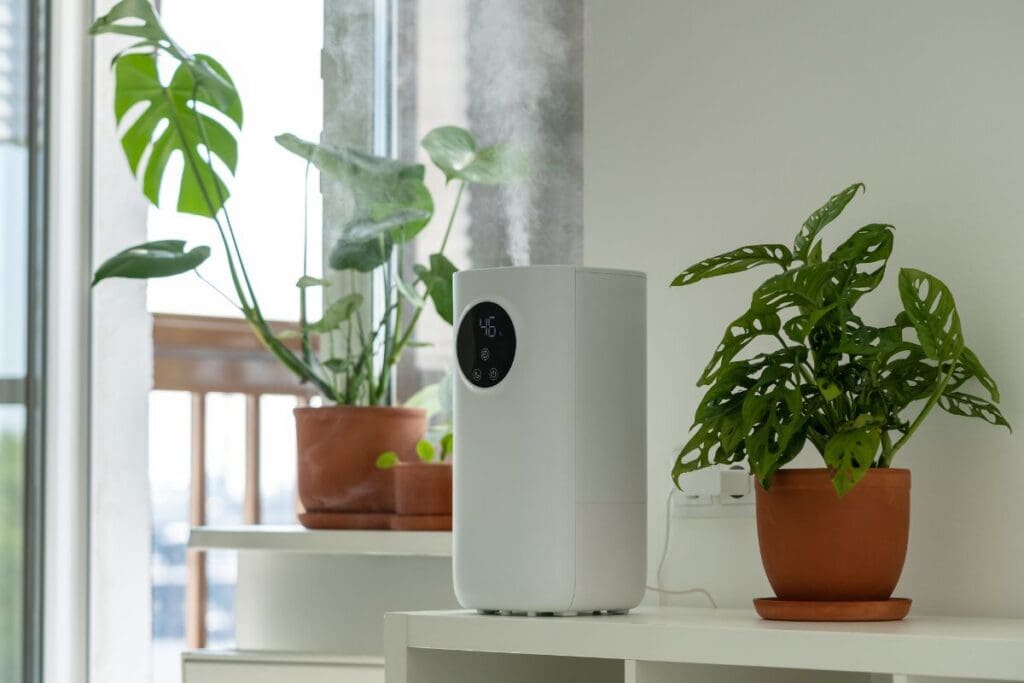
Monstera plants are tropical plants surrounded by a humidity environment. They are used to a humid atmosphere.
They can still survive in low humidity levels, but if the air in the atmosphere is too dry and warm, they might not tolerate it.
During winters, it’s quite normal that the dry air and heaters working all day-night are an addition to the dry and rough air. If that then cases with you need to up your humidity game.
We have various options to increase the humidity levels, whether it is summer or winter.
One easy way is if you have decorative vases, bowls in your home, you can fill them with water. Water will dissipate in the air and increase humidity.
Take pebble trays, put rocks and pebbles, fill it up with water, and keep your monstera making sure the bottom does not touch the water. This will help you a lot to increase the moisture in and around your plant.
Another way is using a humidifier; you must have heard about it. Monitor it according to the need of the humidity in the space.
Group your plants together in a very effective way. Whenever you water your plants, the water will evaporate in the air and increase the air’s humidity.
Mist around your monstera plant every few days depending upon the atmosphere. Don’t let the water sit on the leaves every time you mist.
Also Read: Do Monstera Like To Be Misted? (Monstera Humidity Requirement+Tips)
Fungal diseases
Fungal diseases can kill your plants. Yes, quite hard to hear that, but there’s always hope and ways to save your monstera.
Basically, after showering and pruning your monstera plant, you need to treat them with the right method.
Detach them immediately from other plants, use a fungicide to treat your monstera.
Neem oil or horticulture oil works great on your monstera plant to treat fungal diseases. Take a spray bottle to dilute any one of the oil with water.
Spray all over the plant, soil. Give your plant a week to recover. Inspect after a week if there is a need to respray the solution.
Baking soda or cinnamon mixed with water in a 1:1 ratio is a gentle solution to treat your monstera plant. It will treat and kill fungus, and bacteria will go away. Use all over the plant.
Leaf Diseases
Leaf diseases on monstera plants flourish when they get perfect moisture and poor ventilation in and around the plants.
Quarantine the pot, stop misting. If you prefer the organic way, baking soda is an effective way. Make a mild solution by adding ½ teaspoon of baking soda per gallon of water.
For chemical ways, use all-purpose fungicides readily available in the market. Use according to the instructions.
Pests
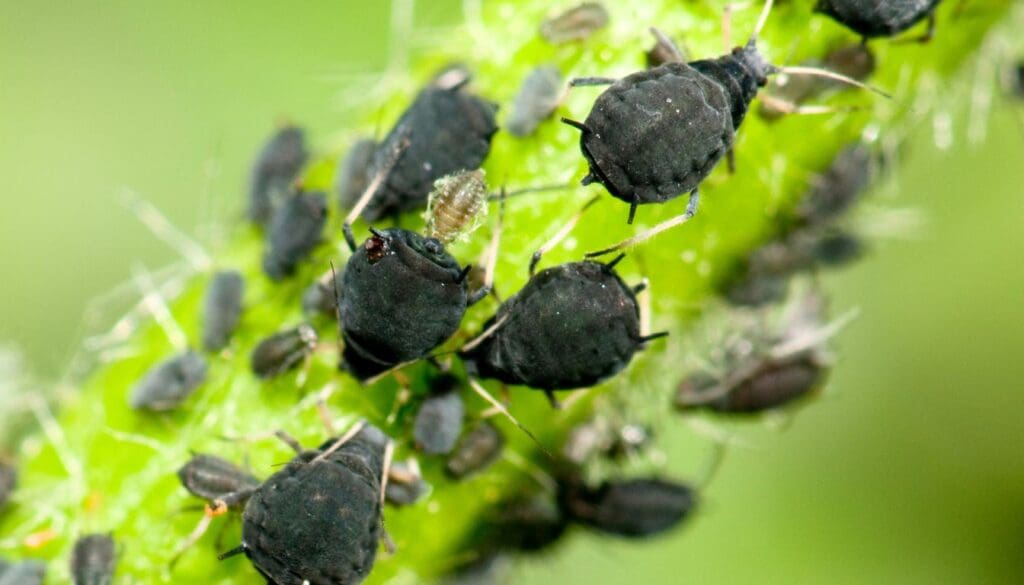
Pests create havoc for any plant. Monstera is a fighter but can fight up to a limited extent.
Before doing anything, calm down and isolate your monster plant, follow the above-given steps of pruning, and wash your plant with a strong water splash.
There are quite a lot of options to treat pests. You just need to select your preferred option.
Neem oil made with neem seeds is an organic insecticide that fights these soft-bodied bugs very well.
Pyrethrum spray is also a natural insecticide, in powder form. Mix the powder with dish soap and water. Pour in a spray bottle and spray all over your monstera plant. They will paralyze the bugs on contact.
Garlic is beneficial to keep these bugs away and repels them. These insects do not like their pungent smell. Just put some cloves of garlic in the soil and see the magic.
Essential oils from lavender, sage, basil, rosemary, thyme keep bugs away. Just add few drops of any of one oil to water and spray on the monstera plant.
Rubbing alcohol is a very effective way to treat these stubborn pests. Mix 1cup of alcohol with a quarter part of water and use.
Mixing mild dish soap with water also works well. They will dehydrate these pests and eventually kill them.
Fertilizer

Monstera plant like any other plants needs fertilizer to grow stronger. Fertilizers are multivitamin supplements for your monsteras.
Now, if you feel you are not giving the right amount of fertilizers to your monstera plant or the nitrogen, phosphorus, and magnesium quantity in the fertilizer you are feeding them with is not in the correct ratio.
To choose the perfect blend of nutrient-rich fertilizer, the idea formulation to check should be 5-2-3 for your monstera plant.
Just dilute with water and feed your monstera once every month for healthy and lustrous leaves.
Adequate watering
Growers many times take their plant for granted or over care for them. Especially in the case of monstera plant being hard ones.
They either ignore watering their monsteras on time or water them too frequently.
You can fix them as it’s not too late. Before watering your monstera plant, always check the soil from the top. Put your finger or skewer in the soil up to 2-3 inches.
Take out and see if the soil still sticks to the finger or skewer. If yes, then the soil is still moist. So you need to wait.
Ideally, if your monstera plants are getting enough light, the soil will dry in a week. So keep a check every seven days.
This way, you can prevent both over and under watering issues.
In case you have already overwatered your monster plant, let the plant dry out completely. Please keep them in the bright sun and provide proper ventilation.
Check your pot’s drainage system. They might also be the reason for overwatering or soggy soil.
Also Read: How Often Do You Water A Monstera? (Watering Requirements+Tips)
Sources: Monstera deliciosa, Developmental changes in Monstera, Chemical influence of monstera.
Recommended Garden Supplies
| Product Image | Our Recommended Gardening Supplies | Check Offers! |
|---|---|---|
Top Top
Top
Top
Top
Top
Top
Top
Top | rePotme Houseplant and Tropical Classic Potting Soil Mix | Check Offer On Amazon |
 Top
Top
Top
Top
Top
Top
Top
Top | Espoma Organic Indoor Plant Food | Check Offer On Amazon |
 Top
Top
Top
Top
Top
Top
Top
Top | GooingTop LED Grow Light 6000K Full Spectrum Clip Plant Growing Lamp | Check Offer On Amazon |
 Top
Top
Top
Top
Top
Top
Top
Top | Soil Moisture Meter | Check Offer On Amazon |
 Top
Top
Top
Top
Top
Top
Top
Top | Govee Hygrometer Thermometer, Bluetooth Enabled! | Check Offer On Amazon |
 Top
Top | LEVOIT Humidifiers for Large Room(Best For Plants) | Check Offer On Amazon |
 Top
Top
Top
Top
Top
Top
Top
Top | Upgraded DIY Automatic Drip Irrigation Kit, 15 Potted Houseplants Support | Check Offer On Amazon |
 Top
Top
Top
Top
Top
Top
Top
Top | Stainless Steel Heavy Duty Gardening Tool Set | Check Offer On Amazon |
 Top
Top
Top
Top
Top
Top
Top
Top | Bonide Insecticidal Soap | Check Offer On Amazon |
 Top
Top
Top
Top
Top
Top
Top
Top | Bonide 32 oz Spray Neem Oil for Organic Gardening | Check Offer On Amazon |
 Top
Top
Top
Top
Top
Top
Top
Top | Garden Safe Fungicide | Check Offer On Amazon |


